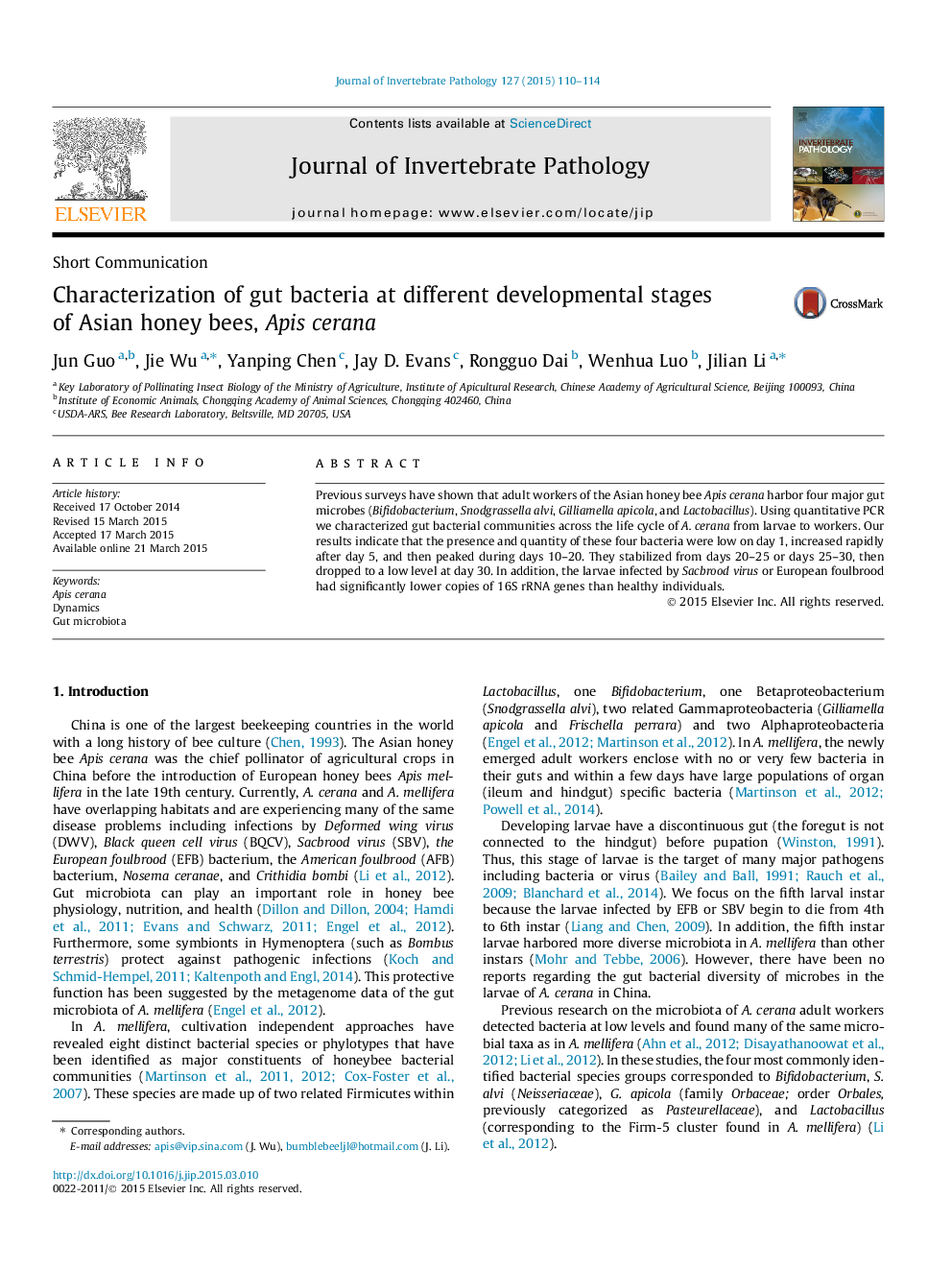| Article ID | Journal | Published Year | Pages | File Type |
|---|---|---|---|---|
| 4557655 | Journal of Invertebrate Pathology | 2015 | 5 Pages |
•We detected the gut microbes of A. cerana during different developmental stage.•Gut microbes in A. cerana tend to dynamic change and remains stable after 20 days.•Gut microbes of larvae have a negative interaction with virus or bacterial diseases.
Previous surveys have shown that adult workers of the Asian honey bee Apis cerana harbor four major gut microbes (Bifidobacterium, Snodgrassella alvi, Gilliamella apicola, and Lactobacillus). Using quantitative PCR we characterized gut bacterial communities across the life cycle of A. cerana from larvae to workers. Our results indicate that the presence and quantity of these four bacteria were low on day 1, increased rapidly after day 5, and then peaked during days 10–20. They stabilized from days 20–25 or days 25–30, then dropped to a low level at day 30. In addition, the larvae infected by Sacbrood virus or European foulbrood had significantly lower copies of 16S rRNA genes than healthy individuals.
Graphical abstractFigure optionsDownload full-size imageDownload as PowerPoint slide
